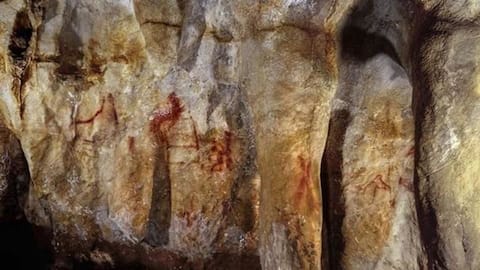World's oldest cave art crafted by Neanderthals, not humans: Study
What's the story
A latest study has revealed that the world's oldest known cave paintings were created by Neanderthals and not modern humans. It shows that our extinct cousins were far from being uncultured brutes as previously believed. A high-tech analysis of cave art at three Spanish sites shows that the paintings were created over 64,000 years ago - 20,000 years before modern humans arrived in Europe.
Discovery
Discovery suggests Neanderthals were much more sophisticated
An archaeologist at the University of Southampton in the UK, Chris Standish said, "It's an incredibly exciting discovery which suggests Neanderthals were much more sophisticated than is popularly believed." "The paintings we dated are the oldest known cave art in the world, and were created around 20,000 years before modern humans arrived in Europe, therefore they must have been painted by Neanderthals," said Standish.
The Neanderthals
Neanderthals, a 'sister' species to Homo sapiens thought symbolically
It further implies that the Palaeolithic cave art including pictures of animals, dots, and geometric signs, must have been made by them. It also indicates that Neanderthals, a 'sister' species to Homo sapiens, and Europe's sole human inhabitants during that time thought symbolically. A team of scientists used a technique called uranium-thorium dating to fix the age of the paintings as more than 64,000 years.
Details
Until now cave art was attributed entirely to modern humans
Until now, cave art has been attributed entirely to modern humans, as claims to a possible Neanderthal origin have been hampered by imprecise dating techniques, researchers said. They added that uranium-thorium dating provides much more reliable results than methods such as radiocarbon dating. Researchers added, creating the art must have involved sophisticated behavior like choosing location, planning of light source and mixing of pigments.
